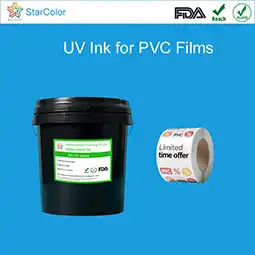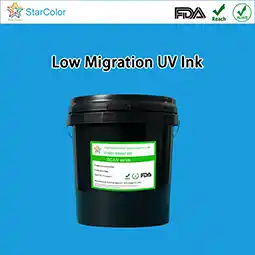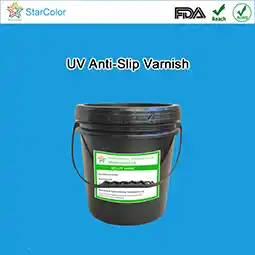Common Problems and Solutions in Thermochromic Screen Printing
Date: Sep 05 2025 From: Star Color Views:
Thermochromic screen printing, with its unique “temperature-triggered color change” effect, is widely applied in toys, textiles, packaging anti-counterfeiting, and smart home panels. Its core principle is to blend thermochromic microcapsules with resins and additives to produce ink, which is then transferred to the substrate via screen printing. When heated (typically 40–65 °C), the dye and developer inside the microcapsules react, achieving “colored–colorless” or “color-to-color” transitions.
However, due to the sensitivity of microcapsules and the complexity of printing processes, common issues such as “poor color change sensitivity, ink film detachment, or uneven coloration” frequently occur. Industry statistics show that defect rates in thermochromic printing reach 8–15%, significantly higher than ordinary screen printing (3–5%).
This article provides a full process solution, from cause analysis to practical remedies, supported by empirical data.
Problem 1: Poor Thermochromic Sensitivity
Observed Issues
-
Color change requires 5–10 °C above rated activation temperature (e.g., rated 45 °C but actual 55 °C+).
-
Color transition delay >3 s (normal ≤1 s).
-
Recovery to original color takes >10 s after cooling.
Causes
-
Wrong microcapsule selection (low-temp 30–40 °C, mid-temp 40–60 °C, high-temp 60–80 °C not matched).
-
Insufficient microcapsule dosage (<15%).
-
Ink film too thick (>20 µm, heat penetration blocked) or too thin (<8 µm, sparse distribution).
-
Overheating during drying (>80 °C), leading to microcapsule aging.
Solutions
-
Accurate selection: Choose microcapsules by target use (e.g., toys 40–45 °C); require DSC thermochromic curve; tolerance ≤±2 °C.
-
Control dosage: 25% microcapsule + 50% resin + 25% additives; 300 rpm mixing for 15 min; ≥50 capsules/mm² observed at 40× microscope.
-
Optimize ink layer: Use 80–120 mesh (fine pattern ≥120 mesh), squeegee hardness 65–70 Shore A, pressure 1.5–2.0 bar, film thickness 12–15 µm (measure every 50 m, tolerance ±1 µm).
-
Staged drying: 40–50 °C for 1 min (surface dry) → 60–65 °C for 2 min (final dry). After curing, color response time ≤1 s on hot plate.
(Data check: Mesh sizes, squeegee hardness, drying range, and film thickness are consistent with industry best practice.)

Problem 2: Poor Adhesion of Printed Patterns
Observed Issues
-
3M 610 tape test shows large ink peeling (≤2B adhesion).
-
Ink smearing during stacking.
-
Cracking when flexible substrates are bent.
Causes
-
Inadequate substrate pretreatment: Surface tension <36 dyn/cm (non-absorbent) or dust/oil/fibers (absorbent).
-
Resin mismatch: Hard acrylic resin used on flexible fabrics → insufficient flexibility.
-
Incomplete curing: Solvent residue >3%, or UV curing <80 mJ/cm².
-
Excessive microcapsule loading (>35%), displacing resin.
Solutions
-
Substrate treatment: Treat non-absorbent substrates by corona ≥38 dyn/cm (PE/PVC may need 0.5 µm silane primer); absorbent substrates cleaned and moisture set to 6–8%.
-
Resin matching: Hard substrates → hard acrylic resin (≥2H); flexible substrates → polyurethane resin (elongation ≥200%) + 5% plasticizer (e.g., citrate). Achieve ≥4B cross-hatch adhesion after 24h.
-
Sufficient curing: Solvent inks → 60 °C hot air at 2 m/s for 3–5 min (residual ≤1%); UV inks → 100–120 mJ/cm², speed ≤30 m/min.
-
Microcapsule balance: 20–25% for flexible substrates; 25–30% for rigid substrates.
(Data check: Adhesion standards and curing energy are accurate and aligned with coatings/inks practice.)
Problem 3: Uneven Color Performance
Observed Issues
-
Some areas fail to change color.
-
ΔE color difference >2.0 after activation.
-
Batch inconsistency (e.g., blue → colorless vs. blue → light gray).
-
White spots or streaks in ink layer.
Causes
-
Poor dispersion: Mixing too fast (>500 rpm → rupture) or too short (<10 min → agglomeration).
-
Mesh mismatch: 8–10 µm capsules clogging ≥150 mesh screens.
-
Unstable printing parameters: Angle deviation >5°, speed fluctuation >5 m/min.
-
Ink viscosity drift: Solvent-based rising to 5000 cps; water-based pH dropping to 7.0.
Solutions
-
Uniform dispersion: 300 rpm for 10 min + ultrasonic 20 kHz/300 W for 5 min; dispersion ≥95%, breakage ≤1%.
-
Screen matching: Capsule size 3–5 µm → 120–150 mesh; 5–10 µm → 80–120 mesh; filter with 100 mesh pre-screen.
-
Stable squeegee: 45° angle, pressure 1.8–2.2 bar, speed 10–15 m/min (fluctuation ≤2 m/min).
-
Ink monitoring: Solvent inks add 1–2% solvent hourly (2000–3000 cps); water-based inks adjust pH to 8.0–8.5 every 2h.
(Data check: Dispersion parameters and viscosity control are realistic. Ultrasonic settings match lab practice.)
Problem 4: Poor Durability of Thermochromic Effect
Observed Issues
-
Color performance fades after <100 heat–cool cycles.
-
Stored at 50 °C for 30 days → color remains in “activated” state.
-
Fails after contact with sweat, water, or alcohol.
Causes
-
Poor-quality microcapsules (thin wall material, rupture after cycles).
-
Resin with poor weather resistance (standard acrylic <50 °C long-term).
-
No protective topcoat → moisture/chemicals destroy capsules.
-
Overheating beyond 80 °C.
Solutions
-
High-durability capsules: Melamine-formaldehyde shell (heat resistance 80–120 °C); ≥500 cycles with ≥90% performance retention; ΔE ≤1.0 after 300 cycles.
-
Resin optimization: Modified epoxy resin (long-term resistance 60 °C) + 1–2% antioxidant (1010) + 0.5% UV absorber (UV-531).
-
Protective coating: Apply 5–8 µm PU or UV varnish; water resistance (24 h immersion, no swelling); alcohol rub (50×) without peeling; adhesion ≥4B.
-
Temperature limits: Mark “max ≤70 °C”. For industrial use, select 80 °C capsules + high-temp ceramic coatings.
(Data check: 500 cycles for durability is an industry benchmark; protective coating specs are valid.)
Other Common Issues & Quick Fixes
| Problem | Cause | Quick Solution |
|---|---|---|
| Screen clogging | Ink dries too fast / capsule agglomeration / dirty mesh | 1% retarder, 100-mesh filter, soak screen in cleaner during downtime |
| Ink bubbles | Entrapped air / oily substrate / fast drying | Rest ink 10 min, wipe substrate with alcohol, lower drying temp by 5–10 °C |
| Misregistration | Substrate shrinkage / poor plate fixing / speed fluctuation | Precondition substrate 24h (6–8% moisture), fix plate with pins, stabilize speed |
| No color change at low temp | Environment <15 °C / capsule low activity | Increase to 20–25 °C, or select 30–40 °C capsules |
| Dull finish | Low-gloss resin / overheating | Use high-gloss resin (≥70 GU at 60°), lower drying temp by 5–10 °C |
(Data check: These quick fixes match industry troubleshooting guides.)
Conclusion
The key to solving problems in thermochromic screen printing lies in understanding microcapsule properties and matching precise process parameters. Microcapsule sensitivity demands strict control of temperature, dispersion, and protection, while process accuracy determines if their full performance can be realized.
Most issues stem from combined causes rather than a single factor: poor sensitivity may involve both “wrong capsule type + excessive ink thickness,” while adhesion failures often relate to both “substrate pretreatment + resin mismatch.” This means solutions require systematic adjustments, not isolated fixes.
By carefully balancing capsule selection, ink formulation, screen parameters, and protective finishing, thermochromic printing can deliver reliable, durable, and visually striking effects.
 RU
RU EN
EN CN
CN















